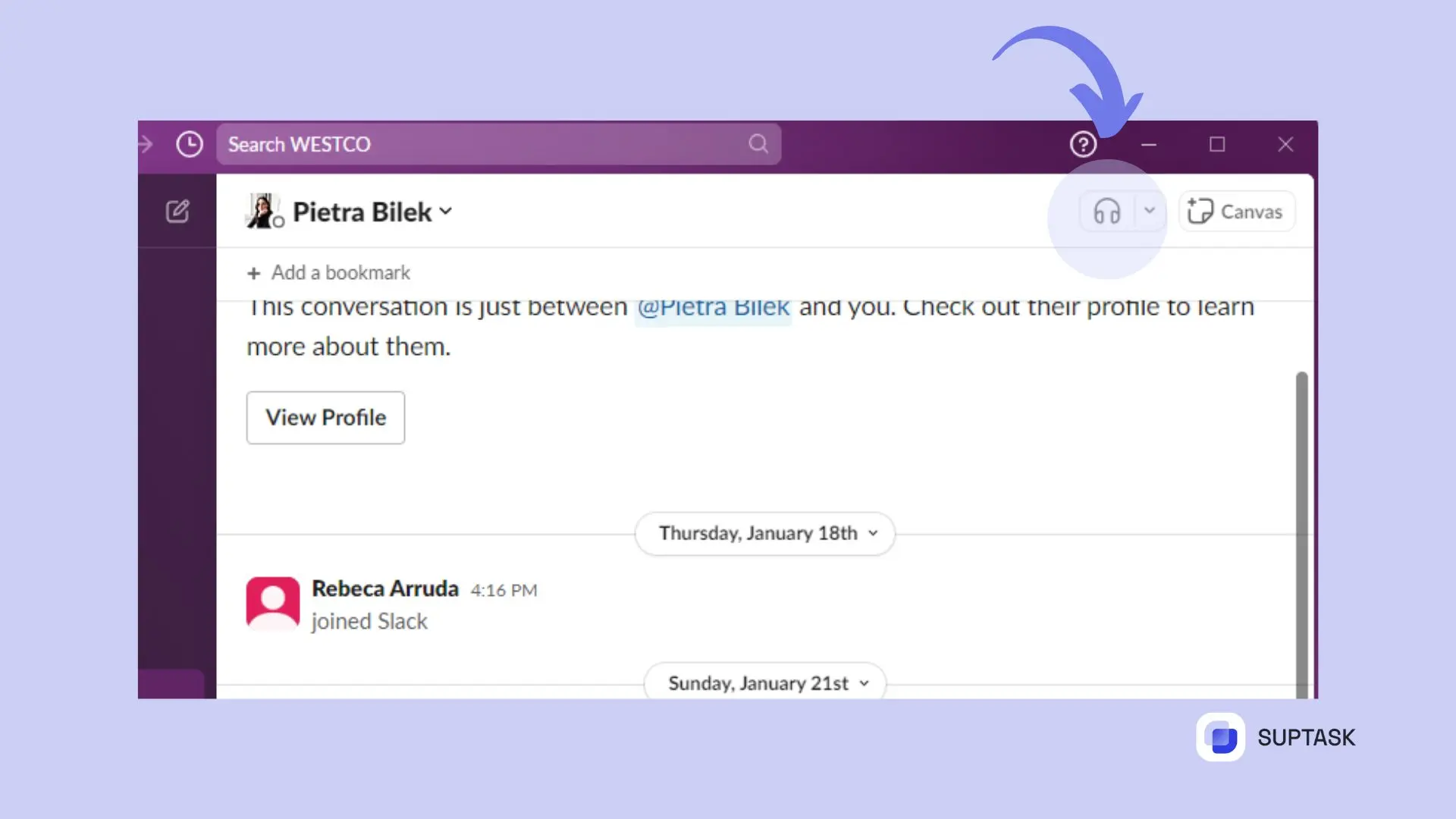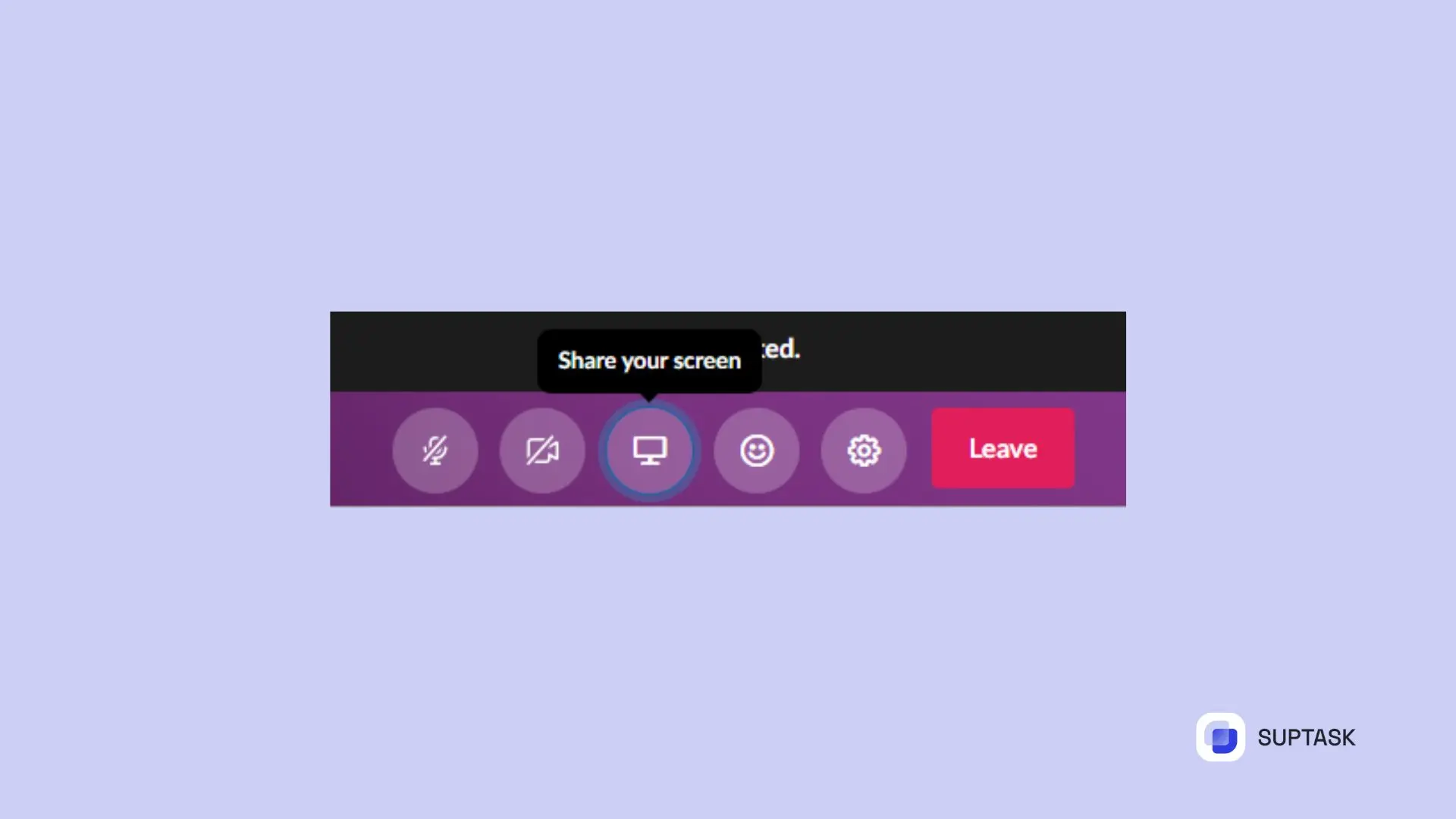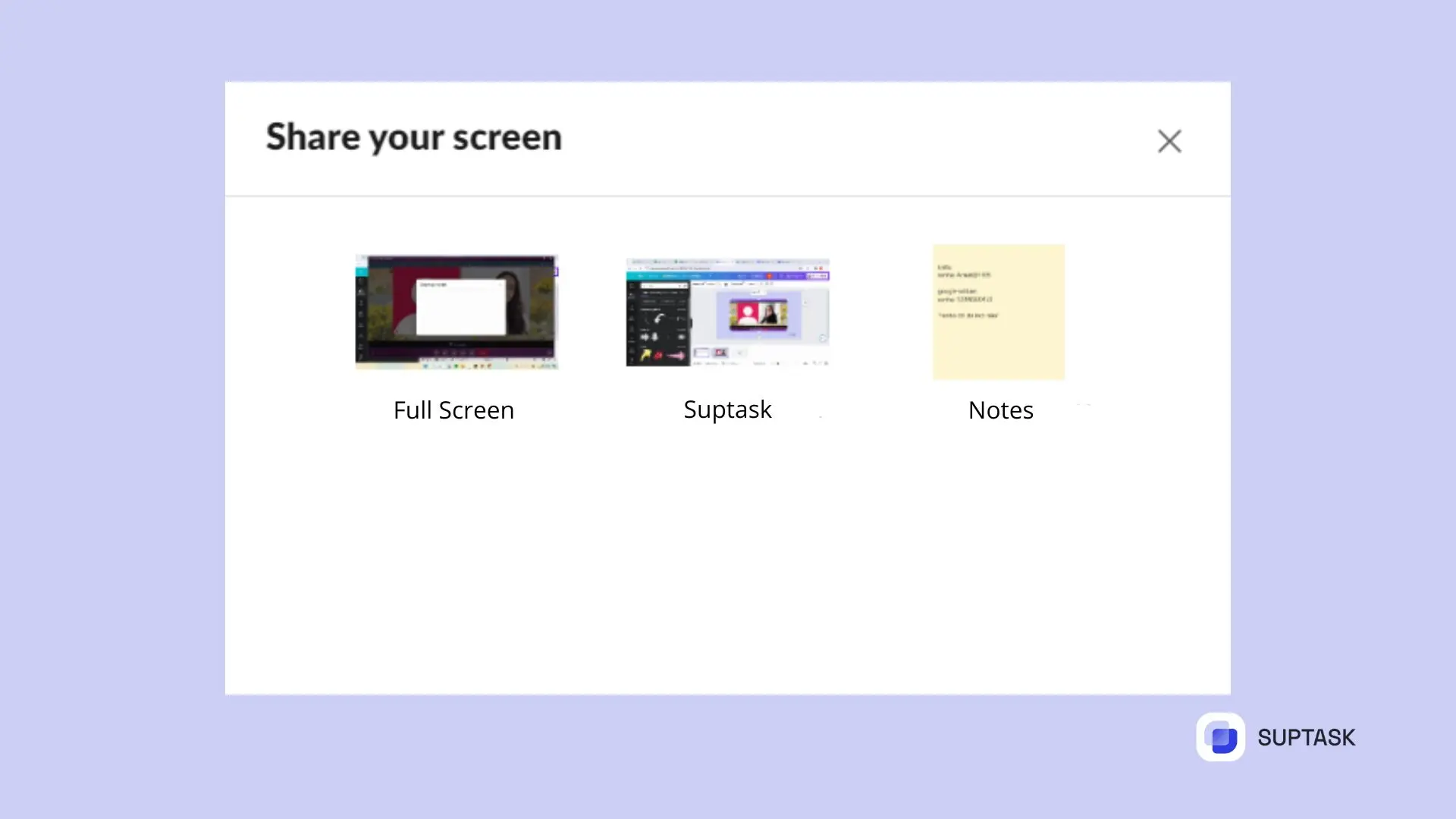
Slack Screen Sharing: Your Ultimate Guide for Effective Collaboration

Need help with Slack screen sharing? Get straight to the solution with this clear, concise guide.
Learn the essentials of setting up Slack screen sharing, captivating your audience, and resolving screen share issues quickly.
- For a better working experience on Slack, try the free version of Suptask.
Key Takeaways
- Starting and managing Slack screen sharing involves initiating a call, selecting to share your entire screen, a specific app, or window, and using presentation tools like the drawing feature for effective engagement.
- Troubleshooting Slack screen sharing may require checking WebSocket connectivity, clearing Slack cache, adjusting browser extensions, updating the app, configuring firewall settings on Windows, or granting permissions on macOS.
- Slack Huddle combines voice and video calls with screen sharing for a dynamic, real-time collaboration experience, supporting casual and formal meetings, and is available across various platforms, including desktops and mobile devices.
Step-by-Step Guide to Share Your Screen on Slack
Imagine you’re in the digital workspace of Slack, eager to share a pivotal presentation and elevate your team´s collaboration.
1. To use Slack screen sharing, initiate a Slack call by clicking the headphone icon at the top of your desired channel or direct message.

2. Once your team’s faces pop up on your screen, look for the Share Screen icon at the bottom of the call window and click it.

3. Next, you can share your entire screen, a specific application, or just one window. Take a moment to decide which option best suits your needs, especially when working with multiple screens.

This choice is pivotal, as it shapes the focus and privacy of your presentation. Remember that Slack’s screen sharing is exclusive – it’s a one-at-a-time show, ensuring your audience’s attention remains undivided.
Once the sharing starts, a monitor icon prompts you from the bottom of the call screen. Clicking it will give you control over the screen-sharing session.
From here, thanks to the screen-sharing feature, you can switch between what you’re sharing, whether it’s an intricate spreadsheet or a dynamic design.
Ending a Screen-Sharing Session
When you’re ready to end screen-sharing, just click the “Stop Sharing” button in the bottom right corner of your screen.
On the other hand, as someone actively using the feature, you’ll notice that during a Slack call, the blue icon for screen share will be constantly available throughout your presentation.
With just one click on this icon, you can quickly wrap up and return to a standard video call interface.
By utilizing this function within Slack’s platform for displaying your entire desktop, everyone grasped what was presented effectively via their Slack screen-sharing capability.
Troubleshooting Common Slack Screen Sharing Issues
If technology doesn’t cooperate, remember that a quick quit and restart of the Slack app often puts things back on track. A full device reboot might be the trick if that is not working.
WebSockets have a significant role in Slack’s real-time communication, including screen sharing.
Check your WebSocket connectivity to ensure that such an invisible culprit prevents your presentation. Connectivity hiccups? Clearing the Slack cache or sending Net Logs for analysis might be your solution.
Sometimes, the interference comes from your browser. If you’re using Slack on the web, investigate your extensions – they may be the barrier to a seamless sharing experience. Disabling them or clearing your browser cache could open the gates to unimpeded collaboration.
Remember, keeping up-to-date ensures synchronization. Regular updates to the Slack app ensure you’re equipped with the latest features and fixes.
These steps will have you back to share your screen in no time, allowing you to focus on what truly matters – your work.
To improve your overall experience with managing issues like Slack screen sharing, consider implementing tools such as an ITSM ticketing system. This solution can streamline support requests and ensure that troubleshooting steps are tracked and handled efficiently, improving your team's ability to resolve issues quickly.
Windows Firewall Settings
The firewall can sometimes be overzealous for Windows users, mistaking Slack’s screen sharing for something sinister.
To clear the path and resolve the Windows firewall blocking Slack issue, allow outbound traffic on UDP/22466 and TCP/443 through the Windows Firewall.
To access the firewall settings, follow these steps:
- Use the search bar to find the firewall settings.
- Select ‘Allow an app through Firewall’.
- Click ‘Change Settings’.
- Click ‘Allow another app’.
- Find Slack and add it to the list of allowed apps.
- Voilà – your screen sharing will now sail through unblocked.
Granting Permissions on macOS
On the other hand, for users of the Slack App for Mac, the problem might be privacy settings.
System Preferences is your starting point, where you’ll navigate to the Privacy tab and grant Slack the golden ticket to screen recording – a necessary step for screen sharing to function.
If Slack seems to forget its permission for Slack screen-sharing, don’t fret.
Removing and re-adding the app to the Screen Recording list often jogs its memory. Or, for a more assertive approach, force quit Slack, unlock the Screen Recording section with the padlock icon’s click, and re-add Slack using the minus and plus buttons.
FAQ
How do I enable screen sharing in Slack huddle?
Initiate or join a Slack call to share screens within a Slack huddle. Once on the call, click the “Share Screen” button at the bottom of your call interface.
Then select which particular screen you wish to share, and after selecting, hit “Share Screen” once more upon completion to revert back to regular video mode within Slack.
Why is screen sharing not working for Slack?
To address problems with screen sharing, verify if there are any outstanding updates for Slack or your device’s operating system, reboot your device, and confirm that you have a reliable internet connection.
Access System Preferences on your device to adjust screen recording settings. Navigate to the Security & Privacy section and select the Privacy tab.
Within this tab, find Screen Recording in the list provided and click on the lock icon, which allows you to modify these preferences.
How do I control screen sharing in Slack?
When participating in a Slack call, you can manage screen sharing by clicking the Share Screen icon at the bottom of the call window to begin showing your screen.
To cease sharing and revert to standard video mode, click on Share Screen again.
Can multiple people share their screens on Slack at the same time?
No, to maintain concentration during the call, Slack permits only one individual to share their screen at any moment.
Try a Slack Ticketing System Today
• No credit card required
• 14 days trial
• Automatic onboarding











